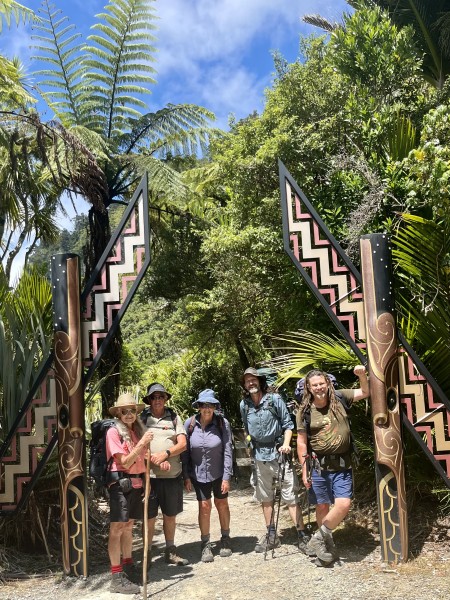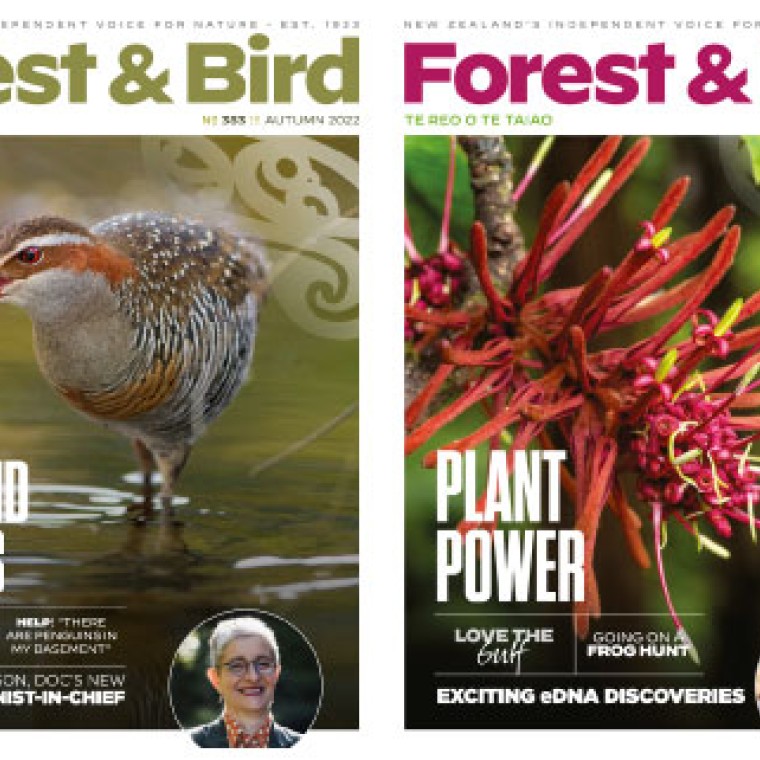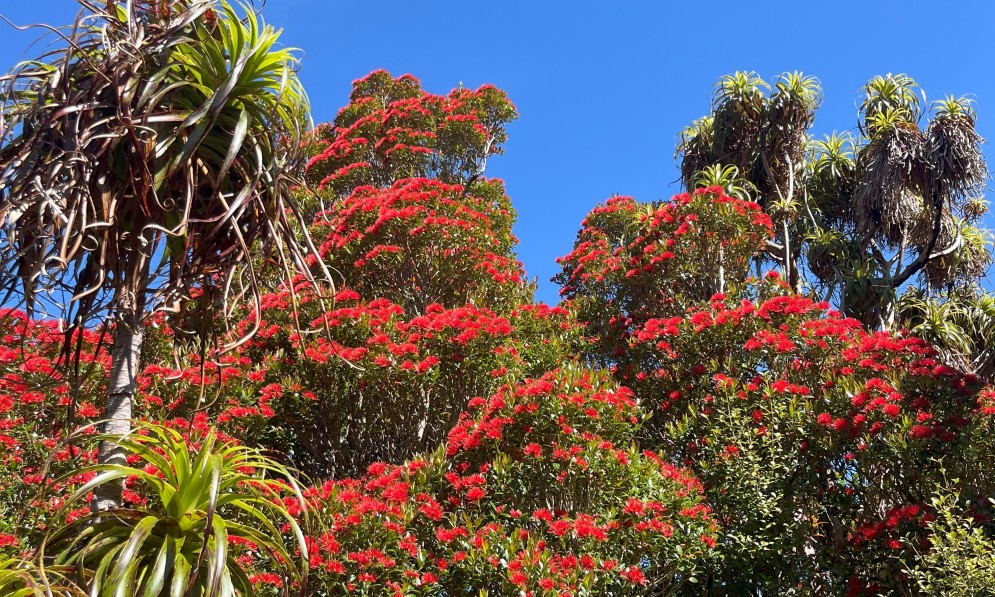Ongoing 1080 operations contributed to a stunning display of red rātā flowers in Paparoa National Park this summer. By Dean Baigent-Mercer
Forest & Bird magazine
A version of this story was first published in the Autumn 2025 issue of Forest & Bird magazine.
West Coast conservationists, including many Forest & Bird members, have been battling the mining threat at Barrytown (see page 18) and last year organised a raffle to support their campaign.
I bought a few tickets to support the cause as the bushy cliffs above the proposed mine are the only place in the world that tāiko Westland petrels nest.
Much to my surprise, I won a guided walk of the Paparoa Track, in Paparoa National Park. This 55km Great Walk opened in 2020 as a memorial to the 29 miners who lost their lives in the Pike River disaster.
Late January was the perfect time to experience southern rātā flowering in Parapora National Park. This summer locals proclaimed that southern rātā were having their best flowering in eight years. At peak bud burst, the West Coast hills were ablaze, blanketing slopes with different tones of blood red to scarlet. Whole Paparoa ridges in the Pororari river catchment turned red. It was a sight to behold.
Building from the many years of 1080 operations, the birdlife was also incredible. Over four days tramping the Paparoa Track, I heard tītīpounamu riflemen during the day, with kea and weka at dusk. I spotted ngirungiru tomtits, korimako bellbirds, tūī, and the fresh poo of roroa great spotted kiwi.

Dean (right) and fellow trampers, Paparoa Track. Image: Janae Fitzgerald
The combination of ongoing aerial 1080, alongside deer and goat control, allows the rātā and bird populations to thrive because they aren’t being eaten by introduced pests. Forest plants can also recover as browsing mammals have been removed. Regular pest control helps establish a healthy forest understorey and recovery from storm events, such as cyclones.
This summer’s stunning rātā displays in Paparoa and at Otira Gorge, Arthur’s Pass, another area that sees regular 1080 operations, show our native forests can be restored using existing predator control methods.
DOC’s Great Walks get this kind of priority treatment, but we need for this to be expanded to other parts of the mainland to protect native biodiversity, lock in carbon, and protect downstream homes, infrastructure, and businesses.
During the tramp, I thought of all the people in the generation before mine who fought hard for years to end native forest logging and create Paparoa National Park.
The spectacular rātā and birdlife of summer 2025 would make them proud. Hats off to them and the people who have looked after these native rainforests since!

FORESTS FOR CLIMATE
Climate Change Minister Simon Watts says nature-based solutions are a key part of the government’s climate strategy.
Last December, he announced Cabinet had agreed to explore public–private partnerships to plant trees on Crown land. He said this would support New Zealand’s climate targets, including Net Zero by 2050.
Welcoming the policy, Forest & Bird said the government could be onto a winner – but only if the trees planted are natives.
“Positive outcomes of this new policy hinge on ensuring that native biodiversity and the climate benefits,” said Dean Baigent-Mercer, our Forests for Climate campaign spokesperson.
“This means planting permanent carbon sinks with native species only. Planting exotics like pine will not help reverse biodiversity loss, but it will create fire-prone landscapes during droughts and deplete groundwater in vulnerable catchments.”

